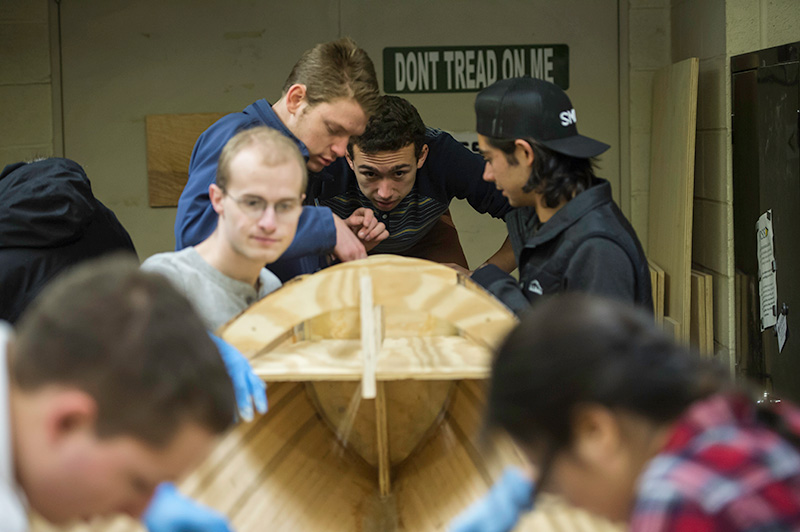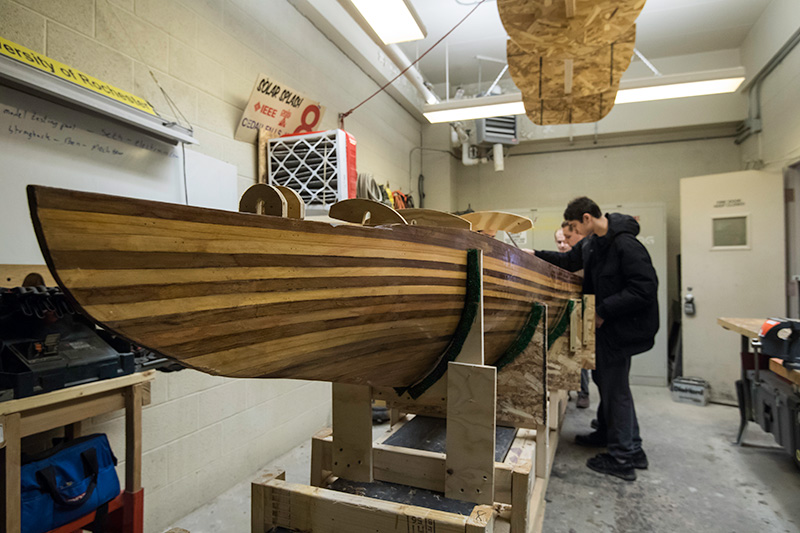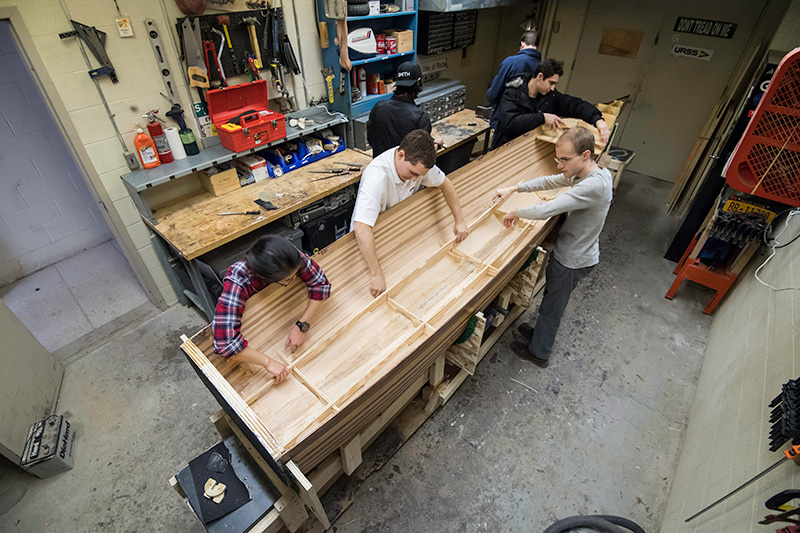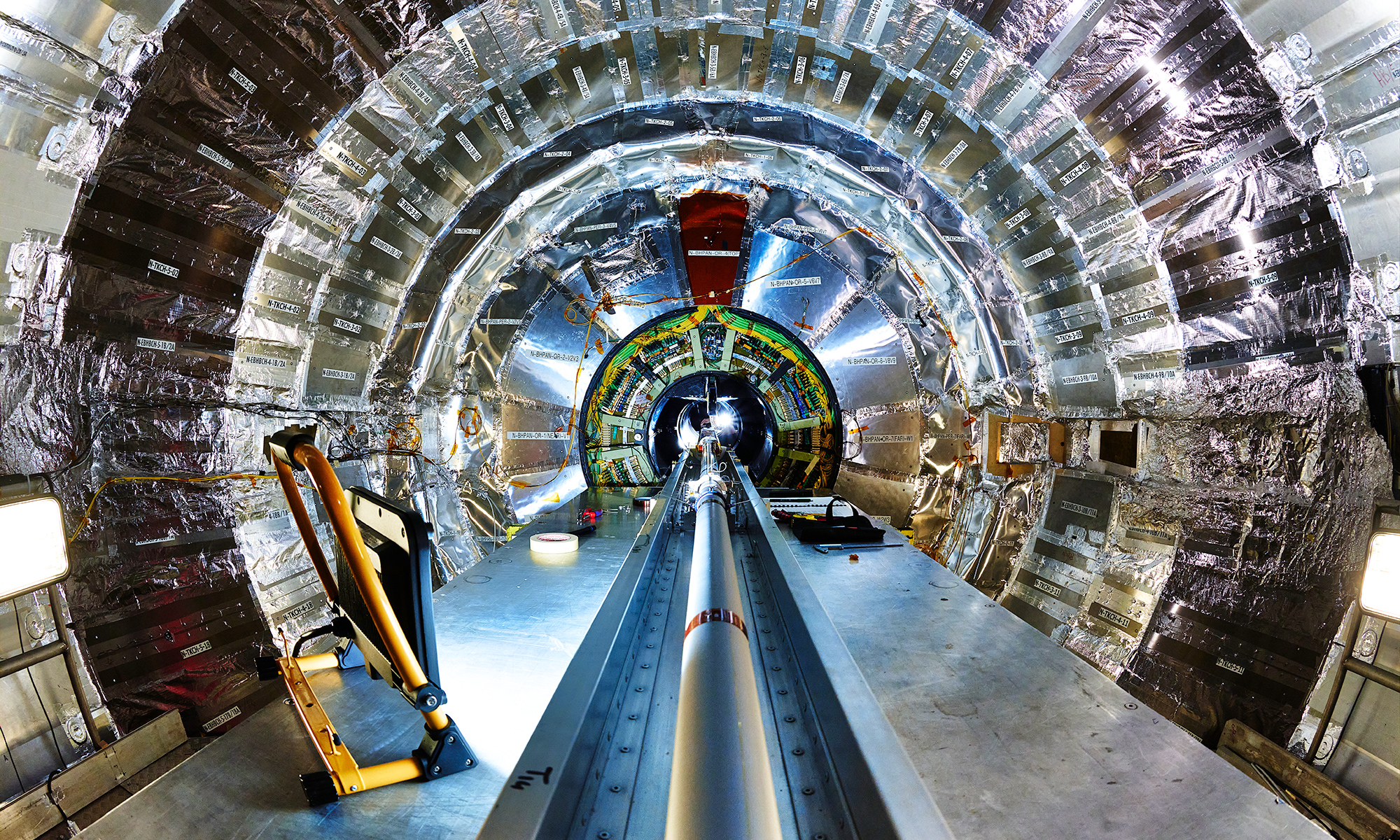What’s new about the Solar Splash boat this year?
Everything.
As a result, the University of Rochester Solar Splash team will head to Springfield, Ohio, in early June confident they have a realistic shot at first place in competition against 15 other collegiate teams that have designed and built solar-powered electric boats.
“Everything on the boat is completely new,” says Solar Splash president Edward Ruppel ’17, a major in biomedical engineering. “We built an entirely new hull, and a new drive system from scratch; we’ve added brand new steering, new batteries, new battery management, and ship to shore communications.”
It’s the first year the team has entirely rebuilt its boat.
“We decided, ‘Let’s make everything perfect this year,” says vice president Matthew Dombroski ’17, a major in electrical and computer engineering.



The hull includes birch-ply interlocking frames designed in Solidworks and fabricated on the computer numerical control (CNC) router at Rettner Hall. The sub-frame deck with flotation foam “basically looks like an airframe with its interlocking pieces,” Ruppel says. The hull is finished with cedar strips that give the boat a distinctive appearance.
The hull, which is also considerably lighter than in previous years, is designed to reach 32 knots, more than double the highest speed of the team’s previous Solar Splash boats.
The team ran a successful USEED campaign this past fall, which raised $4,657. This enabled the team to buy a set of nine new batteries, a new motor (on the way from England), and new electronics.
Dombroski, for example, created a custom printed circuit board (PCB) that can track stresses on the hull, monitors engine RPM and battery temperatures, and could allow the boat to be operated by remote control. While remote operation is not allowed in competition, it “would be a cool tech demo to show what we can do,” Dombroski says.
So far, the team’s best finish has been seventh overall. Ruppel is confident they’ll challenge for the top spot this year because this year’s entry addresses the problems that plagued the team in the past.
“A lot of the failures in the past were because the drive train was too heavy with the wrong prop, and we had to deal with cavitation. We didn’t have redundancies for certain systems. The biggest problem was solar charging itself, and now we have a much more efficient system that won’t keep blowing fuses.”
Ruppel is further encouraged by what he describes as an “awesome” maiden voyage recently on Irondequoit Bay.
“The boat performed better than any other we have built,” he says. “It got up to about 15 knots, and we aim to double that with the reduction of drag from the pontoons and implementation of our smart throttle control program.”
The five-day competition in Springfield begins June 7. It will take place on a man-made lake, and will include technical inspections the first day, followed by three on-the-water competitive events that test speed, maneuverability, and endurance. Points are also awarded for technical reports describing in detail the design and structure of the entire boat-building process. See the team’s technical report here.



